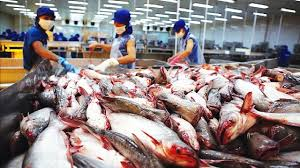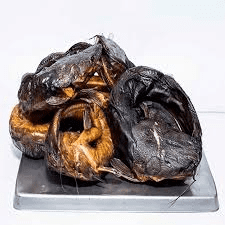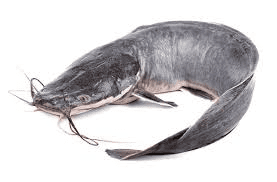Processing, packaging, and exporting catfish involves several essential steps to ensure the fish are safe, high-quality, and ready for international markets. Catfish is a popular fish due to its mild flavor, affordability, and high nutritional value. The journey begins with raising the fish on fish farms, where they are fed and cared for until they reach the appropriate size for harvest.
The first step in processing catfish is harvesting. Once the fish have reached market size, they are collected from the ponds or tanks. This is usually done using nets or by draining the ponds. The fish are then transported to a processing facility. It is important to handle the fish carefully during this stage to minimize stress and injury, which can affect the quality of the meat.
Upon arrival at the processing facility, the catfish are immediately placed in cold water or ice to lower their body temperature. This helps to preserve the quality of the meat and prevent spoilage. The next step is stunning and killing the fish humanely. This is often done using a method called electrical stunning, which quickly renders the fish unconscious before they are killed.
After the fish are killed, they are cleaned and gutted. Cleaning involves removing the scales, which is usually done with mechanical scalers. Gutting involves making an incision along the belly of the fish and removing the internal organs. This step is crucial to ensure the fish are safe for consumption and to prevent any off-flavors from developing.
Once the fish are cleaned and gutted, they are washed thoroughly to remove any remaining blood and debris. After washing, the catfish are often filleted. Filleting involves removing the bones and cutting the fish into boneless pieces. Filleting can be done by hand or with the help of machines, depending on the scale of the operation.
After filleting, the catfish fillets are graded based on their size, weight, and appearance. Grading ensures that the fillets meet specific quality standards. High-quality fillets are then ready for packaging.
Proper packaging is essential to protect the catfish fillets during transportation and storage. The fillets are typically packed in vacuum-sealed bags or covered with a protective layer of ice. Vacuum sealing helps to extend the shelf life of the fish by preventing exposure to air, which can cause spoilage. Each package is labeled with important information such as the weight, expiration date, and handling instructions.
Labeling is an important part of the packaging process. Labels provide essential information to consumers and help to ensure that the catfish comply with regulatory requirements. Accurate labeling ensures that consumers have the necessary information about the product and helps to track the fish in case of any issues.
Once packaged, the catfish fillets are stored in a refrigerated environment to keep them fresh until they are ready for distribution. Proper storage is crucial to maintaining the quality and safety of the fish. Catfish should be stored at a temperature of about 0-2°C (32-36°F) to slow down the growth of bacteria and extend their shelf life.
Exporting catfish involves additional steps to meet international standards and regulations. Exporters must ensure that the catfish comply with both domestic and international regulations. This includes obtaining necessary certifications such as health certificates, which confirm that the catfish have been processed and handled according to safety standards. The fish must also be accompanied by documentation such as certificates of origin, which verify where the fish were produced.
Transportation is a key component of exporting catfish. The fish must be handled carefully to prevent damage and contamination. For long-distance shipping, catfish fillets are often transported in refrigerated
How to Process Catfish for Exportation

1. Harvesting: Harvest catfish when they reach the desired market size, typically between 1-2 pounds. Use nets or traps to catch the fish efficiently. Minimize handling to reduce stress and potential injury to the fish, ensuring they remain in good condition for processing.
2. Sorting: Sort the harvested catfish by size and quality. Separate any damaged or diseased fish from the healthy ones. This step ensures that only the best quality fish are processed for export, meeting market standards.
3. Cleaning: Clean the catfish thoroughly to remove dirt, slime, and internal organs. Use clean, cold water to wash the fish. Specialized equipment like scaling machines and gutting tools can make the process more efficient. Ensure all equipment is sanitized to avoid contamination.
4. Filleting: If the market demands filleted catfish, proceed with filleting. Use sharp knives to carefully separate the flesh from the bones, ensuring uniformity in size and thickness of the fillets. Skilled labor is essential for maintaining high-quality fillets.
5. Skinning: Depending on the market preference, you may need to remove the skin from the fillets. Skinning machines can be used for large-scale operations. Handle the fish carefully to avoid damaging the delicate flesh.
6. Chilling: Immediately chill the processed catfish to maintain freshness. Use ice or refrigerated storage to keep the fish at a temperature of 32°F (0°C). Proper chilling slows bacterial growth and preserves the quality of the fish.
7. Quality Control: Conduct quality control checks throughout the processing stages. Inspect the catfish for any signs of spoilage, contamination, or defects. Ensuring that all fish meet the required standards is crucial for maintaining product quality and customer satisfaction.
8. Freezing: Freeze the catfish for long-distance export to extend shelf life. Use blast freezers to quickly lower the temperature to -4°F (-20°C) or below. Rapid freezing preserves the texture and flavor of the fish.
9. Glazing: Apply a protective glaze to the frozen catfish to prevent freezer burn and dehydration. Dip the fish in cold water or a glazing solution, then freeze again to create a thin protective ice layer.
10. Packaging Preparation: Prepare appropriate packaging materials, such as vacuum-sealed bags or food-grade containers. The packaging should protect the fish from contamination and damage during transit and be suitable for frozen products.
Read Also: How to Prevent Other Predators in a Snail Farm (Snail Business)
How to Package Catfish for Exportation

1. Select Packaging Materials: Choose high-quality packaging materials suitable for food products. Options include vacuum-sealed bags, polyethylene film, or food-grade containers. The packaging should be durable, leak-proof, and resistant to punctures.
2. Portioning: Portion the catfish according to market requirements. Common portions include whole fish, fillets, or specific weight measurements. Accurate portioning ensures consistency and meets customer expectations.
3. Vacuum Sealing: Use vacuum sealing to remove air from the packaging and extend the shelf life of the catfish. Place the fish in vacuum-sealed bags and use a vacuum sealer to tightly seal the bags. This method prevents oxidation and freezer burn.
4. Labeling: Clearly label each package with important information, including product type, weight, date of processing, expiration date, and any required regulatory information. Proper labeling ensures traceability and compliance with export regulations.
5. Freezing and Storing: After packaging, store the catfish in a freezer at a temperature of -4°F (-20°C) or lower. Ensure that the packages are stacked properly to avoid crushing and maintain even freezing.
6. Palletizing: Arrange the packaged catfish on pallets for easier handling and transportation. Use stretch wrap or shrink wrap to secure the packages to the pallet. Palletizing helps in efficient loading and unloading and protects the packages during transit.
7. Shock Absorption: Add cushioning materials, such as foam or bubble wrap, around the packages to absorb shocks and vibrations during transport. This step is crucial for preventing damage to the frozen fish.
8. Container Loading: Load the pallets into refrigerated shipping containers (reefers) that maintain a constant temperature. Ensure that the containers are pre-cooled to the required temperature before loading to maintain the cold chain.
9. Documentation: Prepare all necessary export documentation, including invoices, packing lists, certificates of origin, and health certificates. Ensure that all documents are accurate and comply with the regulations of the importing country.
10. Final Inspection: Conduct a final inspection of the packaging, labeling, and documentation before shipping. Address any issues to ensure that the shipment meets all export standards and requirements.
How to Export Catfish for Profits
1. Market Research: Conduct comprehensive market research to identify demand, competition, and pricing in potential export markets. Understand the preferences and requirements of consumers in these markets to tailor your product accordingly.
2. Regulatory Compliance: Familiarize yourself with the export regulations of your country and the import regulations of the target market. Ensure that your product complies with all health, safety, and quality standards.
3. Certifications: Obtain necessary certifications such as HACCP (Hazard Analysis and Critical Control Points), ISO (International Organization for Standardization), and health certificates. These certifications enhance the credibility and marketability of your product.
4. Pricing Strategy: Develop a competitive pricing strategy that covers production, packaging, shipping, and other costs while ensuring profitability. Consider factors such as market demand, competition, and production costs.
5. Finding Buyers: Identify potential buyers through trade shows, online platforms, and industry networks. Establish relationships with importers, wholesalers, and retailers in the target market.
6. Negotiating Contracts: Negotiate clear and detailed contracts with buyers. Include terms of sale, payment methods, delivery schedules, and responsibilities of each party. Clear contracts prevent misunderstandings and disputes.
7. Logistics and Shipping: Plan the logistics of shipping, including selecting reliable shipping companies, managing documentation, and coordinating with freight forwarders. Efficient logistics ensure timely delivery and maintain product quality.
8. Quality Assurance: Implement strict quality control measures throughout processing, packaging, and shipping. Consistently high-quality products enhance your reputation and attract repeat business.
9. Marketing and Promotion: Develop a marketing strategy to promote your catfish. Use online marketing, trade fairs, and industry publications to reach potential buyers and showcase the benefits of your products.
10. Monitor and Adapt: Continuously monitor market trends, customer feedback, and sales performance. Be prepared to adapt your strategies based on changing market conditions and customer needs to maximize profitability.
Read Also: Factors Affecting the Growth and Reproductive Performance of Snails
Frequently Asked Questions (FAQs) About Catfish

1. What is the best method to harvest catfish?
The best method is to use nets or traps for a quick and efficient process to minimize stress on the fish and maintain their quality.
2. How should catfish be cleaned before processing?
Thoroughly clean catfish to remove dirt, slime, and internal organs using clean, cold water and sanitized equipment.
3. Why is chilling important in processing catfish?
Chilling maintains freshness by preventing bacterial growth and preserving the quality of the fish.
4. What are the benefits of vacuum sealing catfish for export?
Vacuum sealing removes air from the packaging, extending shelf life by preventing oxidation and freezer burn.
5. How should catfish be labeled for export?
Label each package with type, weight, date of processing, expiration date, and regulatory information for traceability and compliance.
6. What temperature should frozen catfish be stored at?
Store frozen catfish at -4°F (-20°C) or lower to maintain quality and prevent spoilage.
7. How can I find buyers for my catfish?
Find buyers through trade shows, online platforms, and industry networks by establishing relationships with importers, wholesalers, and retailers.
8. What certifications are necessary for exporting catfish?
Certifications like HACCP, ISO, and health certificates enhance credibility and marketability in export markets.
9. What is the importance of palletizing in exporting catfish?
Palletizing facilitates efficient handling, loading, and unloading while protecting packages during transit.
10. How can I ensure profitability in exporting catfish?
Ensure profitability by conducting market research, maintaining high quality, managing logistics efficiently, and adapting strategies based on market trends and customer feedback.
Read Also: How to Grow Microgreens






